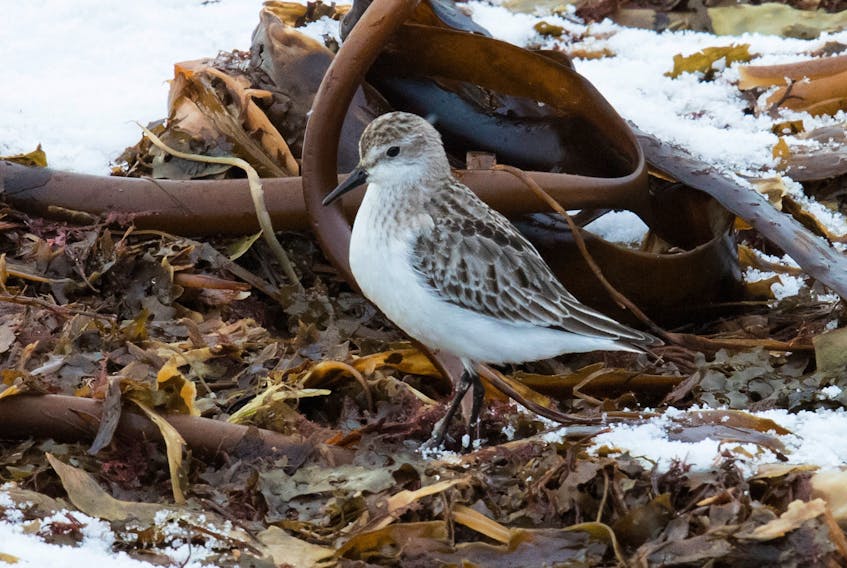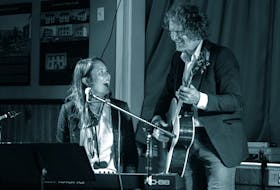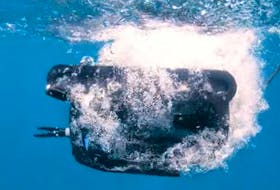The Christmas Bird Count is North America's longest-running citizen science project with counts happening at over 2,000 localities throughout North America. Started in 1900, each Christmas Bird Count is conducted on a single day between Dec. 14 and Jan. 5.

Counts are carried out within a 24-km circle that stays the same from year to year. There are a dozen or so Christmas Bird Counts conducted annually in Newfoundland and Labrador.
The Cape Race Christmas Bird Count took place on Dec. 14. Eleven people in five groups were assigned different territories to be covered within the 24-km diametrer circle.
It was the one day of the week when the weather was nothing short of beautiful. It was calm and sunny and not too cold.
A total of 62 species of bird were recorded.
This is a little higher than normal. Part of this increase was due to a freeze up of local ponds overnight forcing a number of freshwater ducks out on in the saltwater. For example Biscay Bay held three ring-necked ducks, 29 black ducks, 57 greater scaup, two bufflehead and five common goldeneye. These are birds not expected at this location in winter. The calm water and excellent lighting allowed for scanning of the whole Biscay Bay from a single vantage point with a spotting scope. A record high tally of 12 red-throated loons would not have been possible otherwise.
Sea watchers at the Cape Race lighthouse prefer windier conditions to get the seabirds up and flying past the cape.
While the species diversity was on the low side in the calm conditions, there was a big northward movement of dovekies, also called bullbirds. An impressive 6,990 dovekies were counted, mostly within the first hour of daylight. Where they were going and what sparked this localized mass movement is something we will never know.
Birds are forever making us ask “why?”
This fall Long Beach has corralled the largest bed of kelp in several years. The heaps of decaying kelp produce heat creating a haven for the insect that we call the kelp fly. The swarming flies provide an excellent food source for various birds.
The most unusual bird for the count was a semipalmated sandpiper. This sandpiper is one the most common species of shorebird in the province during migration but normally they have all departed the province for South America by late October. This particular bird showed up at Long Beach on Nov. 20. Because of it similarity in appearance to a couple of European sandpipers in winter plumage, photographs were sent to European shorebird experts just to make sure this out-of-date bird was not a rare vagrant. It was not. It was indeed your bog-standard semipalmated sandpiper attaining star status by remaining six weeks beyond its normal departure date.
It appeared very healthy and should be able to fly due south to South America with the white-rumped sandpiper it was buddied up with, and with a similar winter destination.
Other goodies attracted to the Long Beach kelp bed were a semipalmated plover, killdeer and a dozen American pipits.
A rough-legged hawk at Mistaken Point, a peregrine falcon at Brista Cove River and a yellow-breasted chat at Chance Cove Provincial Park rounded out list for the Cape Race Christmas Bird count.
Putting in such a concentrated birding effort in a limited area usually produces a few unexpected birds such as this.
However, the effort also tells us something about bird trends. The meager count of 59 common eider and 38 Iceland gulls were signs of the mild weather this fall. It may be a few weeks before the usual thousands of eiders reach the southern Avalon Peninsula.
There are several Christmas Bird Counts held annually in Newfoundland and Labrador. Information on these events usually appears in the local media.
Tradition dictates the St. John’s Christmas Bird Count will be held on Dec. 26. You may contribute to the bird count if you live within the St. John’s count circle area. The centre of the circle is the Confederation Building. The outer boundaries of the count circle are the ferry dock in Portugal Cove, Torbay, Maddox Cove, some of Kilbride and Mount Pearl.
The birds you see coming to your feeder on Dec. 26 or any birds you see on a walk around town, or even better in the woods, can be added to the total count. A rough guesstimate of numbers will do.
At the end of the day or the day after email your bird list to the address at the bottom of this column. Please include your name and the address, or at least the general area in which you counted birds. Your birds will be added into the grand total.
May you all have a bird-filled Christmas.
Bruce Mactavish is an environmental consultant and avid birdwatcher. He can be reached at [email protected]
RELATED:









